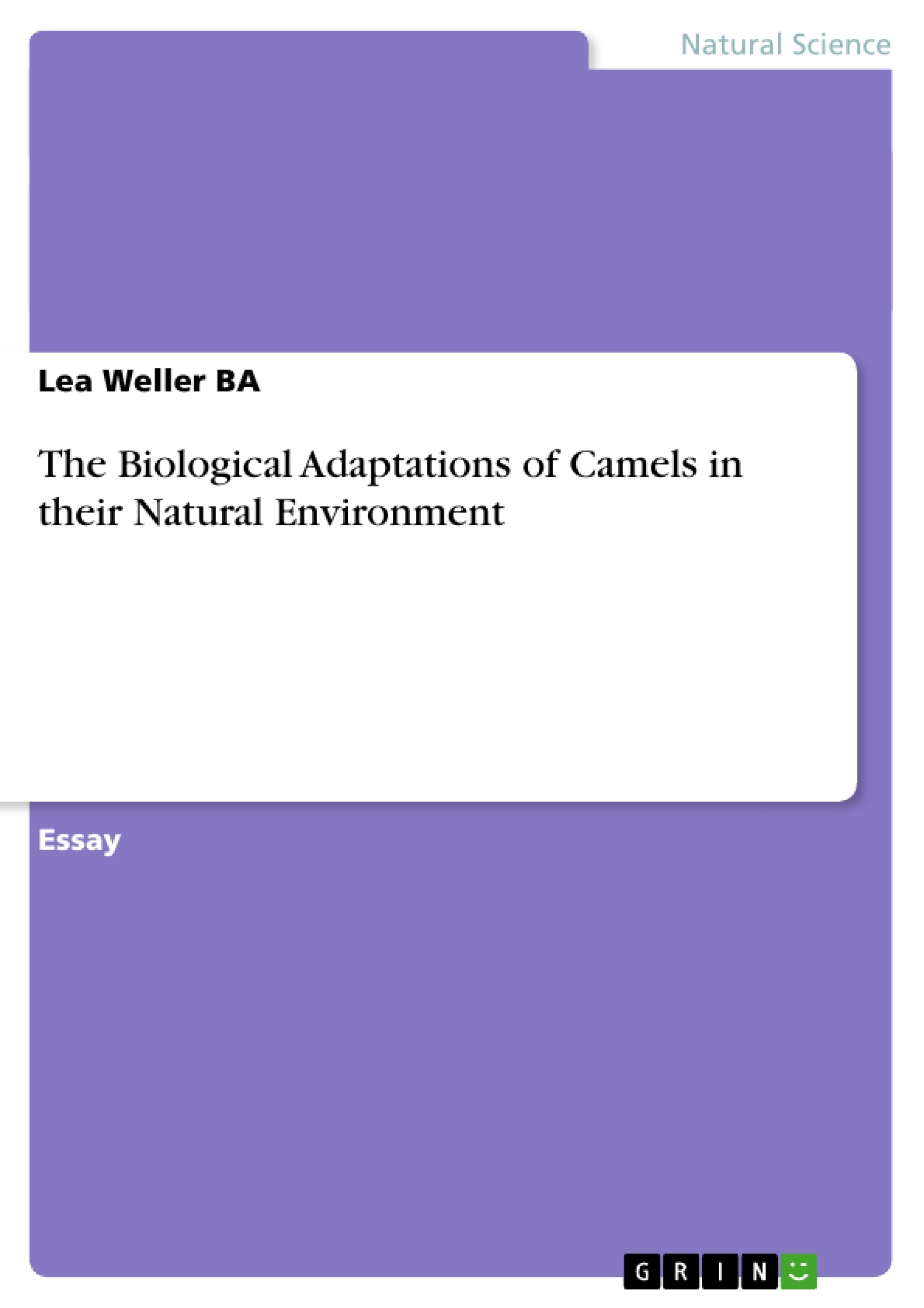I will describe the camels adaptations it has to make in order to survive in its natural environment. It will include the camel’s physical adaptations, their biological and physical adaptations towards heat and environmental temperature changes, water losses and gains. Also their tolerance to dehydration, and how they adjust their body’s physiology to survive through it. It will explain how the camels hump actually works, what it stores and how it uses its stores for energy
Summative Essay – Discuss the Biological Adaptations of Named Organism to its Natural Environment
The Camel (Camelus sp.)
This essay will be describing the adaptations of a camel to its natural environment. It will include the camel’s physical adaptations, their biological and physical adaptations towards heat and environmental temperature changes, water losses and gains. Also their tolerance to dehydration, and how they adjust their body’s physiology to survive through it. It will explain how the camels hump actually works, what it stores and how it uses its stores for energy.
The camel’s natural habitat is the desert. Deserts have extreme temperatures ranging from scorching hot summers to freezing cold winters. The Bactrian camel (two-humped camel) has a thick brown fur coat that changes through the year. It grows thick and dense in the cold winter to provide the camel with good insulation against the cold temperatures. In the desert, when it is summer the camel will shed its dense fur so that the camel can keep cool. The fur falls off in large sections very rapidly, leaving the camel looking almost naked. However, the Dromedary camel (one-humped camel) does not have any variations in its growth of fur. It is the same length all year round.
The camel has thick bare skin spots on its chest so it can lie on the hot desert sand. The thick patches raise the camel body slightly off the ground so it is not directly in contact with the radiation and heat from the ground. Camels have teeth so that they can eat thorny plants without doing any damage to the lining of their mouth. Camels can close their nostrils to protect the lining in their nasal passage, from blowing sands. Their ears are also lined with fur for the same reason of keeping sand out. To stop sand from entering the eyes of a camel they have long eyelashes for eye protection. The eyebrows of a camel are thick and stick out over the eyes to shade and protect their vision from the brightness of the day’s sun. Their feet are flat, wide and have two toes that spread apart when walking so that the camel does not sink into the sand. The camels are herbivores and its usual diet consists of grasses, herbs, leaves and even thorns. It has thick lips so they do not feel any pain when eating the more thorny vegetation. Their usual fur colour is from light beige to dark brown, but can be white or almost black. This enables them blend in with their natural environment. They also have very good eyesight and a strong sense of smell.
[...]
- Quote paper
- Lea Weller BA (Author), 2008, The Biological Adaptations of Camels in their Natural Environment, Munich, GRIN Verlag, https://www.grin.com/document/264572
-

-

-

-
Upload your own papers! Earn money and win an iPhone X. -

-
Upload your own papers! Earn money and win an iPhone X. -

-
Upload your own papers! Earn money and win an iPhone X. -

-
Upload your own papers! Earn money and win an iPhone X. -

-
Upload your own papers! Earn money and win an iPhone X.

